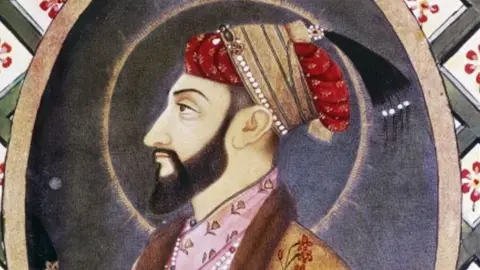The Mughal Empire from 1576 to 1757 spans the reigns from Akbar the Great to the early decline under later emperors, marking a golden age of cultural, architectural, and political achievements followed by gradual weakening. Below is a concise overview of this period:
Key Phases and Emperors (1576–1757)
- Political Achievements: By 1576, Akbar had defeated key rivals (e.g., Rana Pratap at Haldighati) and expanded Mughal control across North India. His policy of Sulh-i-Kul (universal tolerance) promoted religious harmony, integrating Rajputs, Persians, and others through alliances and marriages.
- Administration: Introduced the Mansabdari system (rank-based bureaucracy) and revenue reforms under Todar Mal, standardizing land measurement and taxation.
- Culture: Patronized art, literature (e.g., Akbarnama by Abul Fazl), and architecture (Fatehpur Sikri). Encouraged translations of Hindu texts into Persian and founded the syncretic Din-i-Ilahi.
- Significance: Akbar’s reign (ending 1605) laid the foundation for Mughal stability and cultural synthesis.
- Governance: Continued Akbar’s policies but was less decisive, relying on capable ministers and his wife, Nur Jahan, who wielded significant influence.
- Art and Culture: A patron of miniature paintings and gardens (e.g., Shalimar Bagh). His memoir, Tuzuk-i-Jahangiri, offers insights into the era.
- Challenges: Faced rebellions, including from his son Shah Jahan, and tensions with the Sikhs (execution of Guru Arjan Dev in 1606).
- Foreign Relations: Strengthened ties with the British East India Company, granting them trading rights in 1615.
- Architectural Legacy: Known for iconic monuments like the Taj Mahal (1632–1653), Red Fort, and Jama Masjid in Delhi, symbolizing Mughal grandeur.
- Administration: Maintained stability but increased taxes to fund wars and construction, straining the treasury.
- Military Campaigns: Expanded into the Deccan (Ahmednagar annexed) but faced resistance from the Marathas and prolonged conflicts in Central Asia (Balkh campaign).
- Decline: His illness in 1657 triggered a succession war among his sons, with Aurangzeb emerging victorious.
- Expansion: Expanded the empire to its greatest territorial extent, conquering Bijapur, Golconda, and parts of South India.
- Policies: Reversed Akbar’s religious tolerance, reimposing jizya (tax on non-Muslims) and destroying some Hindu temples, alienating Rajputs and others.
- Challenges: Faced rebellions from Marathas (led by Shivaji), Sikhs (Guru Tegh Bahadur’s execution), and Jats. Prolonged Deccan campaigns drained resources.
- Legacy: His orthodox policies and military overreach weakened the empire’s cohesion, sowing seeds of decline.
- Weak Successors: Emperors like Bahadur Shah I, Jahandar Shah, and Farrukhsiyar lacked authority. Frequent succession disputes and court intrigues eroded central power.
- Regional Powers: Marathas, Sikhs, and regional governors (nawabs) asserted autonomy. The Deccan and Bengal became semi-independent.
- Foreign Invasions: Nadir Shah’s invasion (1739) sacked Delhi, looting the Peacock Throne and Koh-i-Noor diamond, exposing Mughal weakness. Ahmad Shah Durrani’s raids (1748–1757) further destabilized the empire.
- British Ascendancy: The East India Company gained influence, with Robert Clive’s victory at Plassey (1757) marking a turning point, shifting power to the British.
Cultural and Economic Highlights
- Architecture: The period saw unparalleled monumental architecture, blending Persian, Indian, and Islamic styles (e.g., Taj Mahal, Humayun’s Tomb).
- Art and Literature: Mughal miniature painting peaked, with artists like Ustad Mansur. Persian chronicles and poetry flourished, alongside regional languages like Urdu.
- Economy: The Mughal economy was among the world’s largest, driven by agriculture, textiles, and trade. Cities like Delhi, Agra, and Lahore were global commercial hubs.
- Society: A syncretic culture emerged under Akbar and successors, with festivals, music, and interfaith dialogues, though Aurangzeb’s policies strained this harmony.
- 1576: Marks Akbar’s consolidation of power, setting the stage for Mughal dominance.
- 1757: The Battle of Plassey symbolizes the Mughal Empire’s loss of political relevance to the British, though the empire nominally continued until 1857.
Decline Factors
- Weak leadership after Aurangzeb.
- Overextension and financial strain from wars.
- Rise of regional powers (Marathas, Sikhs, nawabs).
- Foreign invasions (Nadir Shah, Durrani).
- Growing European influence, especially British.









0 Comments